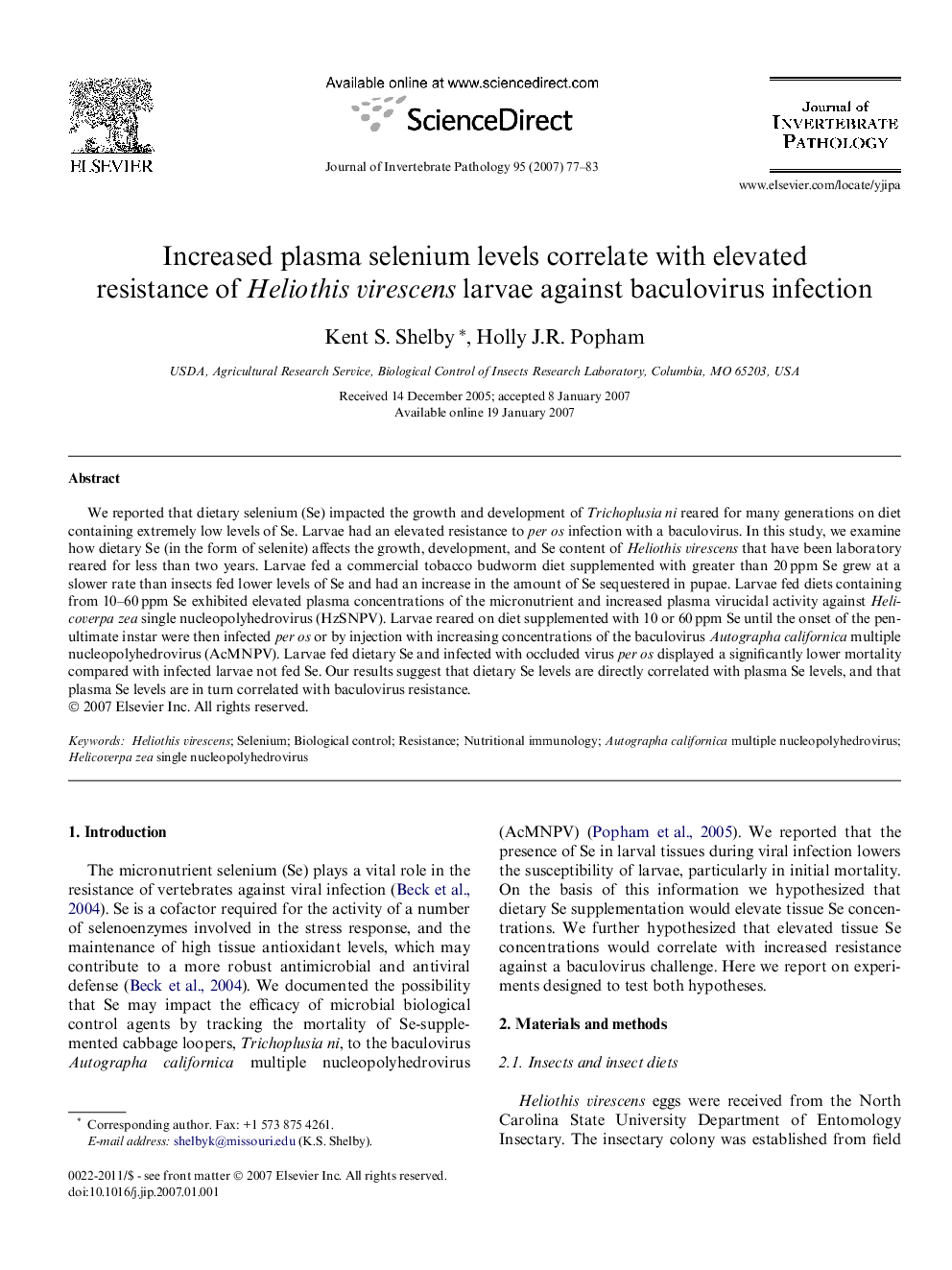| Article ID | Journal | Published Year | Pages | File Type |
|---|---|---|---|---|
| 4558743 | Journal of Invertebrate Pathology | 2007 | 7 Pages |
We reported that dietary selenium (Se) impacted the growth and development of Trichoplusia ni reared for many generations on diet containing extremely low levels of Se. Larvae had an elevated resistance to per os infection with a baculovirus. In this study, we examine how dietary Se (in the form of selenite) affects the growth, development, and Se content of Heliothis virescens that have been laboratory reared for less than two years. Larvae fed a commercial tobacco budworm diet supplemented with greater than 20 ppm Se grew at a slower rate than insects fed lower levels of Se and had an increase in the amount of Se sequestered in pupae. Larvae fed diets containing from 10–60 ppm Se exhibited elevated plasma concentrations of the micronutrient and increased plasma virucidal activity against Helicoverpa zea single nucleopolyhedrovirus (HzSNPV). Larvae reared on diet supplemented with 10 or 60 ppm Se until the onset of the penultimate instar were then infected per os or by injection with increasing concentrations of the baculovirus Autographa californica multiple nucleopolyhedrovirus (AcMNPV). Larvae fed dietary Se and infected with occluded virus per os displayed a significantly lower mortality compared with infected larvae not fed Se. Our results suggest that dietary Se levels are directly correlated with plasma Se levels, and that plasma Se levels are in turn correlated with baculovirus resistance.
